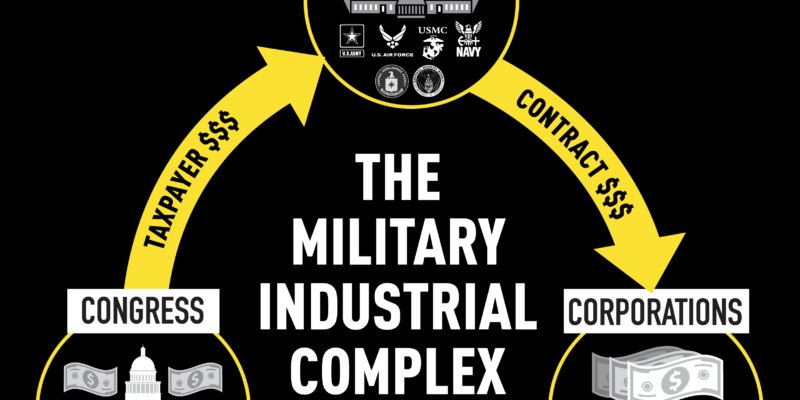
Arms control advocates have increased voiceshare, media audit finds
What are some of the major themes emerging from media coverage of nuclear weapons and war? Who is being heard on this issue, and what are they saying? How have recent geopolitical changes affected this coverage?
To address these questions, ReThink Media conducted an extensive analysis of media, messaging, and opinion coverage of nuclear security and disarmament issues over the past three years.
This work was completed as part of a narrative project that the Nuclear Threat Initiative and Ploughshares Fund are supporting for the field to help spur progress on reversing the nuclear arms race in the near term and building political will for nuclear disarmament in the longer term.
Read on for a breakdown of our key findings and some suggestions for how the advocacy community can increase its impact in the coming months and years.
Coverage of nuclear weapons and warfare increased sharply in 2022.
Russia’s invasion of Ukraine in February 2022 changed both the focus and volume of nuclear weapons coverage. As shown in the chart below, coverage of nuclear weapons/warfare shot up enormously in 2022, from an average of 500 stories per month to nearly 3,000 articles in March 2022, with extensive coverage referencing Russia’s nuclear capabilities.
This increase in volume was accompanied by a shift in the focus of coverage: After the invasion, the vast majority of nuclear news focused more singularly on Russia and Ukraine, rather than on Iran, as it had previously. Coverage of China and North Korea held mostly steady at lower — but substantial — rates.
Share of nuclear coverage by country focus
Advocates were the third-most quoted source, after government officials.
With more than one third of all quotations, sources from foreign governments and militaries were the most-quoted source type in this coverage. US federal officials, including the president, made up 21% of quotes. Nuclear disarmament and arms control advocates were the third-highest source type at 7%. This number may seem small, but it represents a substantial increase from previous years. So while there is certainly room to grow, this share is a real win for the arms control community!
Top sources in news stories, by percentage of total quotes
We also found that arms control advocates are increasingly taking a firm stance in the news, rather than just making statements of fact, an important improvement over past years.
However, advocates still rarely discuss solutions when they are quoted in the news. Less than 10% of advocate quotes in news articles referenced a specific solution or call to action. This is problematic because for most people, thinking about nuclear weapons and the possibility of nuclear war is frightening, and they don’t feel that there is anything that they can do about it. If advocates don’t provide a sense that solutions are possible, the audience is likely to feel overwhelmed and either disengage from the issue or lean toward the opposition’s stated solutions.
How are nuclear weapons characterized?
Quotes from both advocates and the opposition revealed a shared assumption that nuclear weapons are dangerous, and that it would be catastrophic if they are used. For the most part, sources agreed — at least implicitly — on the imperative to avoid nuclear war.
However, from that shared understanding, the two sides draw very different conclusions about what should be done. According to arms control advocates, nuclear weapons make us less safe, and we should work to eliminate them (or at least quit making more of them). Accompanying this argument are warnings of the risk of harm from accidents or irrational actors.
Opponents couched their arguments for the creation of new nuclear weapons in the language of deterrence, only rarely advocating for the use of those weapons. Still, while the opposition may concede that nuclear weapons are dangerous, they insist that the US must maintain a nuclear arsenal because it deters would-be attackers. In other words, for the opposition, the path to safety for the US is having the most — and the most powerful — nuclear weapons.
These opponents denounce arms control agreements as capitulation to an enemy. They also argue that we can’t count on our adversaries to hold up their end of the bargain, reflecting a pervasive distrust in international institutions and foreign governments. This stance evokes the classic American value of “toughness,” and makes for a clear story with a villain, a protagonist, and an outcome. Critics of the Iran nuclear deal (aka the JCPOA), for example, said the Biden Administration was “groveling” with “hat in hand,” conceding too much to “a bad guy,” and making “a bad deal.”
By contrast, proponents of the deal brought up sanctions, inspections, and other technical details — language that, while precise, makes a less compelling case.
Implications for advocacy
Advocates can (and sometimes do) make the case for arms control and disarmament in a more compelling way. Encouragingly, our audit found that advocates are increasingly making explicit arguments, as opposed to neutral statements of fact. This is a step in the right direction, but there is still room for the community to tell a more compelling story.
First, advocates should use metaphor and simple, relatable language to tell a compelling story about why they should care about the risks posed by the nuclear arms race. Arguments might make a connection to the future (i.e., discuss how today’s nuclear policies will impact future generations) or evoke shared values, like safety, courage, or morality. Second, advocates should provide audiences with more concrete examples of solutions, past successes, and calls to action. Together, these appeals can highlight the danger posed by these weapons while promoting a path forward and challenging complacency with the status quo.
Finally, advocates should organize more proactive media strategies to drive coverage on their terms, like the one deployed around the release of the Oppenheimer film in summer 2023. As part of an organized coalition-wide strategy, advocates took to the media to highlight the human toll of the US’ nuclear weapons testing program and to educate audiences about the current risks posed by these weapons. In connecting nuclear weapons policy — and its consequences — to a pop culture event, advocates were able to tell a moving, relatable story to a broader audience. The success of their efforts also helped build support for the expansion of the Radiation Exposure Compensation Act, which was passed by the full Senate and several key House Committees in the 2023 session.
Persuading people that there is a better way forward and that they can make a difference is not easy. However, with preparation, collaboration, and the right support, advocates can change the conversation for the better.
To access the full report, please contact us at analysis@rethinkmedia.org.



